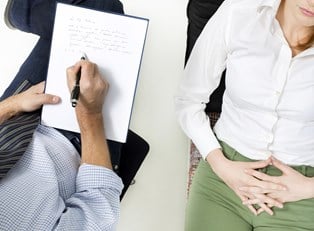Trichotillomania is a psychological disorder in which you have a compulsive urge to pull out your own hair. The most common hair-pulling sites include the scalp, eyebrows, and eyelashes; less common ones may include arms, legs, underarms and the pubic area. While there is no known cause, specialists believe the disorder is linked to brain abnormalities responsible for emotional regulation and impulsive control; therefore, you may have the urge to pull your hair when stressed, anxious or bored.
Who suffers from trichotillomania?
Trichotillomania typically affects adolescents, but it can occur at any age. It also seems to affect more women than men, but this may be because men can conceal bald spots more easily with shaved or closely cropped hairstyles. It has also been shown that more women seek treatment for disorders that negatively affect physical appearance. Nevertheless, hair pulling is troubling if you’re trying to stop, and knowing its signs and symptoms is a first step to receiving treatment.
What are the signs and symptoms of trichotillomania?
People suffering from trichotillomania commonly:
- Repeatedly pull hair from scalp, eyebrows, eyelashes, arms, legs and pubic area (outside of typical grooming habits, such as shaping eyebrows and facial hair).
- Feel increased tension, such as a tingling or itching, before pulling out hair.
- Feel pleasure or relief after pulling the hair.
- Have shortened hair or thinning areas where hair has been pulled.
- Conceal hair and thinning areas with hats, scarves, wigs, or headbands.
- Prefer to pull specific hairs or hair from a specific region (i.e. pulling coarse hair over fine hair, or pulling hair from a certain area of the scalp).
- Bite, chew or eat pulled hair, a condition called Trichophagia, which can be painful and even life-threatening because hair can build up and create a blockage in the intestinal tract.
- Play with the pulled hair, rubbing it across skin, lips, or face.
- Pick at or compulsively scratch skin or bite fingernails.
- Can rule out another disorder such as dermatological problems or another mental disorder that can explain the hair pulling.
- Experience guilt, shame, or embarrassment about the inability to stop pulling out hair.
- Experience social behavior changes such as withdrawing from and avoiding relationships out of fear of disorder being exposed, or making up excuses for thin or bald areas.
What should I do if I experience these symptoms?
If you believe that you have trichotillomania, see a medical doctor to determine a possible physical cause, such as dermatitis, for your urges. If a physical cause is ruled out, the doctor may then refer you to a psychologist or psychiatrist who will provide behavioral therapy or prescribe medication if the hair pulling is due to a brain abnormality that affects impulse control.
Even if you are embarrassed about pulling your hair, it’s crucial to talk to family and friends about it. By sharing this with them, you will have the opportunity to educate them about trichotillomania and gain their support during your treatment.



